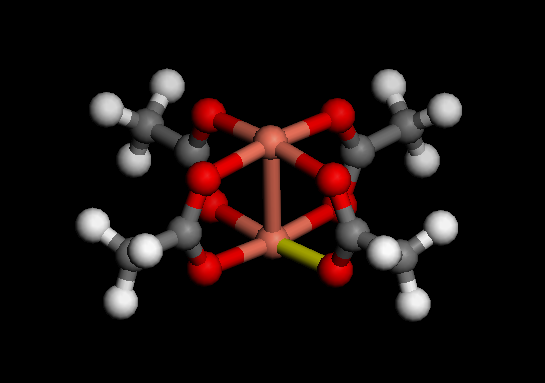| |
Can we count molecules?

Molecules are very small and the number of molecules are huge. How can we count them? Of course, the quantitative aspects of chemistry are about average over large numbers of molecules. There is no way to count them individually. Instead, we arrive at a way to measure them in terms of a macroscopie unit, the mole. A mole of molecules is still a collection of molecules, but it has a dimension that we fathom. We define a mole in a convenient way so that the number of molecules in a given atomic or formula weight (in grams) is always a constant, which we call Avagradro's number. Avogadro's number is really just the inverse of the average atomic mass unit (in units of grams). Thus, 1 gram of H atoms, 4 grams of He atoms, 12 gramts of C atoms, 32 grams of O2 molecules all contain the same number of particles, Avagradro's number. That number is 6.022 x 1023.
Ideal gas law
We can weigh out liquids and solids in grams. Then we can apply Avagradro's number to make a quantitative statement about how many atoms or molecules are present. However, gases are in a different category. We cannot "weigh" them. Actually, we should be careful to say that when we say "weigh" we mean determine the mass. Weight in physics relates to the force (i.e. mass times acceleration). We are ignoring the acceleration aspect. So, how do we determine that mass of gas? We must use something we can measure. We use the equation of state known as the ideal gas law, which tells us that at a given combination of pressure, volume and temperature we can know how many moles of gas molecules are present. It is important as you progress to become facile with going back and forth between the gas and condensed phase description of matter. CHemical reactions produce and consume gases. Therefore, sometimes we end needing to use the ideal gas law to describe some portion of a reaction. By the way, how can we use an "ideal" gas law for a real gas? At sufficiently low pressure the gas molecules rarely interact and their behavior is close enough to the ideal case that we use it as an approximation. Fortnately, 1 atm of pressure is a relatively low pressure for these purposes. By the time we reach 100 atm the deviations from ideal behavior are large enough that we must employ corrections. In the field of Chemical Engineering, these corrections are critical since they determine the properties of fluid dynamics in chemical reactors.
XXX
XXX
- XXX
- XXX
| |
|
|
|